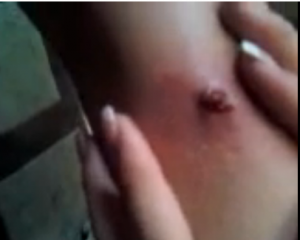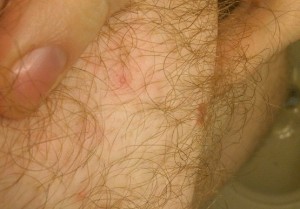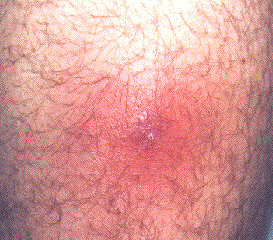Infected hair follicle or folliculitis is a condition wherein the hair follicles are infected with bacteria or fungi resulting to a hard red lump that surrounds the base of the hair. Hair follicles are part of our skin. The growth of the hair follicle is due to the cells that are bundled together. The hair follicle is joined together or attached to the sebaceous gland that produces oil called sebum. The thicker the hair, the more sebum is produced. Overproduction of sebum would cause the skin near the hair follicle to swell due to infection. This can happen to any part of the skin. Infected hair follicle can cause embarrassment to an individual if it is left untreated. Not only that, but if not given attention, infected hair follicle can lead to a more serious condition.
Causes of Infected Hair Follicle
• Staphylococcus aureus – This is a type of bacteria that is considered the most common cause of infected hair follicle. Staph bacterium is normally present on one’s skin however it can immerse itself deeper into the skin when cuts from shaving or any skin injuries allow entry for this type of bacterium. The staph infection will appear white with pus bumps located near the infected skin follicle. It causes irritation and itching on one’s skin.
• Psuedomonas folliculitis – Pseudomonas are a type of bacteria that are usually found on dirty pools or hot tubs. Prolonged immersion of the skin in the tub would cause the invasion of the bacteria in your skin. This would cause an infected hair follicle characterized by a red and round appearance with bumpy rash that soon turns into small groups of blisters.
• Tinea barbae – This is a type of fungus that causes infected hair follicle that grows on the beard area of a male. The skin would appear red, and white bumps are formed as well. This may become serious when there is pus found in the nodules resulting to swelling of the lymph nodes.
• Pseudofolliculitis barbae – This is a term used when a noticeable inflammation of the hair follicles has developed which are caused by ingrown beard hair.
• Pityrosporum folliculitis – These are usually found on the back part and the chest areas. They appear red and have itchy pustules. These are caused by yeast fungus.
• Herpetic folliculitis – This is the most dangerous cause of infected hair follicle of all. This is caused by shaving a cold sore allowing herpes simplex virus to spread and infect nearby hair follicles. Without immediate treatment, this could lead to the known fatal disease, HIV/AIDS.
• Other causes – Other causes would include shaving of one’s hair, as this will cause friction to the hair follicles. Tight clothes can also cause infected hair follicle due to the lack of oxygen for the skin. Another cause would be excessive perspiration as well as skin problems such as dermatitis and acne.
If these factors manifest into one’s skin, the person will experience symptoms of infected hair follicle which include pain on the site, formation of blisters with pus, sores with pus and finally large swollen bumps or mass.
Treatment of Infected Hair Follicle
For staph infected hair follicle, the best treatment is applying topical antibiotic to the site of infection in order to kill the bacteria. To know the type of medicine to use, seek a physician’s advice. If an individual suffers a more serious type of staph infection, oral medications should also be taken. For infection that arise from Pseudomonas, the key is to counter the itchiness with the use of an anti itch topical cream or ointment. There are also more natural ways to counter the itchiness, such as with the use of lemon, aloe vera, neem tree oil or baking soda. Gently apply any of these regimens on the affected area. For treatment of tinea barbae and pityrosporum folliculitis infection, application of fungal creams and lotions over the affected area relieves the irritation and itchiness. Such anti fungal creams include terbinafine, clitrimazoe and miconazole. These drugs generally kill the fungi found on the skin. Aside from the anti-fungal medications, there are also natural home care solutions to consider such as tea tree oil and cider vinegar and water mixture. For Pseudofolliculitis barbae, it is advisable not to shave during breakouts on skin. Finally for herpetic folliculitis, oral antiviral medications should be taken such as acyclovir, famciclovir and valacyclovir. However, be warned that these oral antiviral drugs may cause nausea, diarrhea, headache and pain on the abdomen.
The best way to lessen episodes of infected hair follicle is to avoid the causes by maintaining clean and healthy practices, avoiding wearing tight clothes, refraining from shaving when there is a breakout and staying away from contaminated pools. As always, prevention is always better than cure.
Infected Hair Follicle Pictures
Check out these pictures of infected hair follicles or folliculitis


